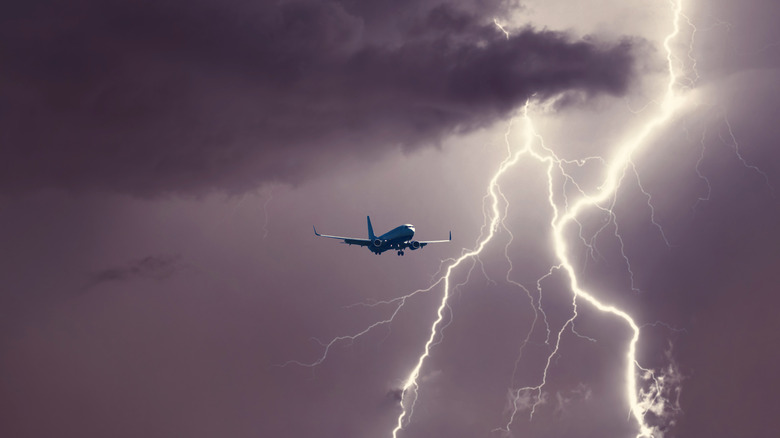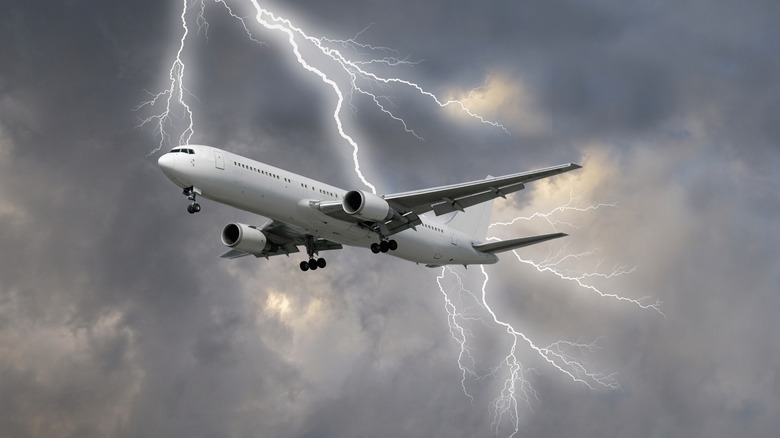What Happens If Lightning Strikes A Plane?
Flying is usually not an enjoyable experience at the best of times, but it can be downright scary for some of us. Especially when worrying about potential hazards or spending too much time reading up on some of the worst accidents in aviation history. You're not going to actually have to worry about a gremlin on the wing of the plane or anything like that, but something like a lightning strike is a very realistic and understandable concern.
Yes, all that electricity could damage other parts of a plane, and in the past it has. However, it's been over 50 years since the U.S. has seen a plane crash caused by lightning; Pan American Flight 214 was struck, which set off a reserve fuel tank in one of the wings.
Pilots will try to avoid bad weather by default, by either flying around it or turning around, but that may not always be an option. Though it applies more to extreme weather — something like a relatively mild storm, even with lightning, wouldn't be considered enough of a risk. Which is probably why it's actually way more common than you might think for airplanes to be struck by lightning every year. Typically, once or twice per plane in a given fleet.
When lighting strikes
Technically speaking, when a plane gets struck by lightning that awful quote from the first X-Men movie applies — in that it's "The same thing that happens to everything else." Lightning is basically just a big jolt of electricity, and electricity tends to want to pass through objects quickly, which applies to planes as well. It's also similar to what happens when lightning strikes your car.
However, lightning striking a plane in mid-flight isn't going to fry the occupants. The electric current will hit part of the plane during the initial strike, travel along the metal exterior of the plane, then exit one of the extremities — like the tail or a tail fin. People inside may not even realize the plane was actually hit.
Modern aircraft are built with several safeguards and techniques to mitigate the risk of lightning damage. Grounding and shielding of internal equipment components, a solid exterior that doesn't give lightning a path inside (or sometimes composites that are less conductive), fuel systems designed to be as lightning-proof as possible, and diverter strips to redirect lighting strikes away from instruments like radar.
Really, it's the winds typically found in a lightning storm that pose a bigger risk to the plane than the lightning itself. Also, any time a plane gets struck by lightning, it's inspected for damage after it lands.

